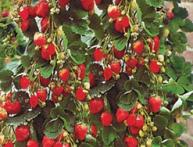Proper care of blueberries - delicious berries on the table

Growing berries in home garden beds is a very popular activity among amateur gardeners, because they are often very beautiful bushes that are covered with aromatic berries, ready to fall into our mouths or on the table at any moment in the summer. One of the most common berries for growing in summer cottages and gardens is blueberries.
Caring for blueberries is quite simple, because this berry grows well in forests, where no one provides any care to trees and bushes except Mother Nature herself.
So, first, let's figure out what blueberries are. This is a low or tall shrub from the blueberry family, which is particularly winter-hardy, resistant to many pests and diseases, quite durable and bears fruit very early. With proper care, blueberries can produce fruit for 50 to 90 years. Blueberries are widely used for treatment in folk medicine, and they are also simply sweet and sour berries that have an incredible aroma.
Blueberry care largely depends on the soil in which it was planted. It takes root well on drained peaty loam, sandy and soddy-podzolic soils. Blueberries are cross-pollinated plants. The soil should be moderately acidic, moist and fairly fertile, and blueberries will also need to provide adequate access to oxygen, so drainage is common in blueberry care.
Pollination is carried out by bees, bumblebees and other insects, so it is best to plant two types of blueberries close to each other.
Shrubs should be planted in a sunny area, protected from the wind.
It is necessary to water the blueberries in moderate doses, but so that the top layer is not dry. Fertilizing should be done with mineral fertilizers, preferably in the th year after planting.








